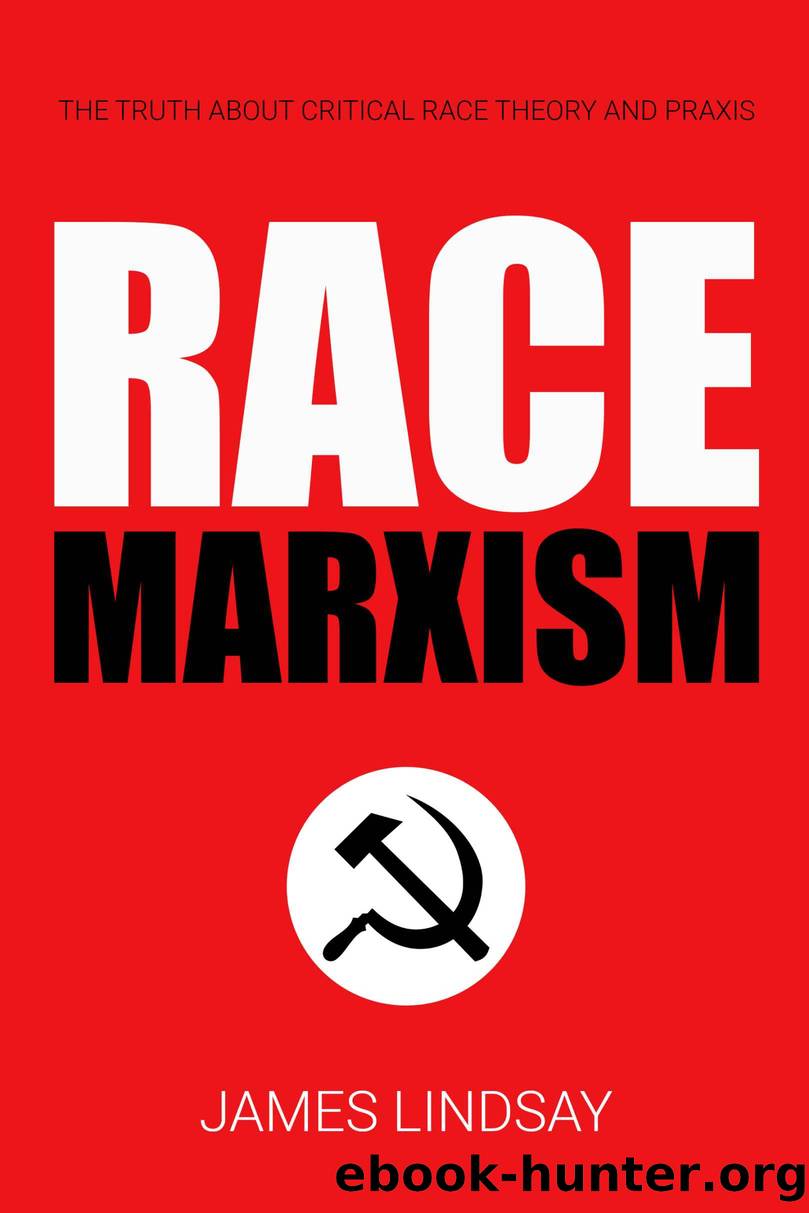Race Marxism by Lindsay James

Author:Lindsay, James
Language: eng
Format: epub
ISBN: 9798795809083
Publisher: New Discourses
Published: 2022-02-15T00:00:00+00:00
And thatâs exactly how Critical Race Theory emerged from Critical Legal Studies (and exactly how it takes over everything). It came in, got involved, and then said, in effect, âyouâre not centering race in your analyses of power; this is probably because you are racists who canâtâor worse, wonâtâeven realize youâre racist.â And it worked. And it still works. Hereâs how they describe it in their own words, which reek of Black Feminist identity politicking:
At its inception in the late 70s, Critical Legal Studies (CLS) was basically a white and largely male academic organization. By the mid-eighties, there was a small cadre of scholars of color who frequented CLS conferences and summer camps. Most were generally conversant with Critical Legal Theory and sympathetic to the progressive sensibilities of Critical Legal Studies as a whole. Unlike the law school mainstream, this cadre was far from deterred by CLS critique of liberal legalism. While many in the legal community were, to put it mildly, deeply disturbed by the CLS assault against such ideological mainstays as the rule of the law, to scholars of color who drew on a history of colored communitiesâ struggle against formal and institutional racism, the critsâ contention that law was neither apolitical, neutral, nor determinate hardly seemed controversial. Indeed, we believed that this critical perspective formed the basic building blocks of any serious attempt to understand the relationship between law and white supremacy. However, while the emerging ârace critsâ shared this starting position with CLS, significant differences between us became increasingly apparent during a series of conferences in the mid-eighties.
Our discussions during the conferences revealed that while we shared with crits the belief that legal consciousness functioned to legitimize social power in the United States, race crits also understood that race and racism likewise functioned as central pillars of hegemonic power. Because CLS scholars had not, by and large, developed and incorporated a critique of racial power into their analysis, their practices, politics and theories regarding race tended to be unsatisfying and sometimes indistinguishable from those of the dominant institutions they were otherwise contesting. As race moved from the margins to the center of discourse within Critical Legal Studiesâor, as some would say, Critical Legal Studies took the race turnâinstitutional and theoretical disjunctures between critical legal studies and the emerging scholarship on race eventually manifested themselves as central themes within Critical Race Theory.166
Download
This site does not store any files on its server. We only index and link to content provided by other sites. Please contact the content providers to delete copyright contents if any and email us, we'll remove relevant links or contents immediately.
| General | Discrimination & Racism |
Nudge - Improving Decisions about Health, Wealth, and Happiness by Thaler Sunstein(7261)
iGen by Jean M. Twenge(5170)
The Fire Next Time by James Baldwin(5033)
Adulting by Kelly Williams Brown(4243)
The Hacking of the American Mind by Robert H. Lustig(4098)
The Sports Rules Book by Human Kinetics(4086)
The Ethical Slut by Janet W. Hardy(4044)
Captivate by Vanessa Van Edwards(3733)
Mummy Knew by Lisa James(3527)
In a Sunburned Country by Bill Bryson(3376)
The Worm at the Core by Sheldon Solomon(3328)
Ants Among Elephants by Sujatha Gidla(3282)
Suicide: A Study in Sociology by Emile Durkheim(2909)
The Slow Fix: Solve Problems, Work Smarter, and Live Better In a World Addicted to Speed by Carl Honore(2849)
The 48 laws of power by Robert Greene & Joost Elffers(2818)
Humans of New York by Brandon Stanton(2694)
Handbook of Forensic Sociology and Psychology by Stephen J. Morewitz & Mark L. Goldstein(2606)
The Happy Hooker by Xaviera Hollander(2586)
The Tipping Point by Malcolm Gladwell(2566)
